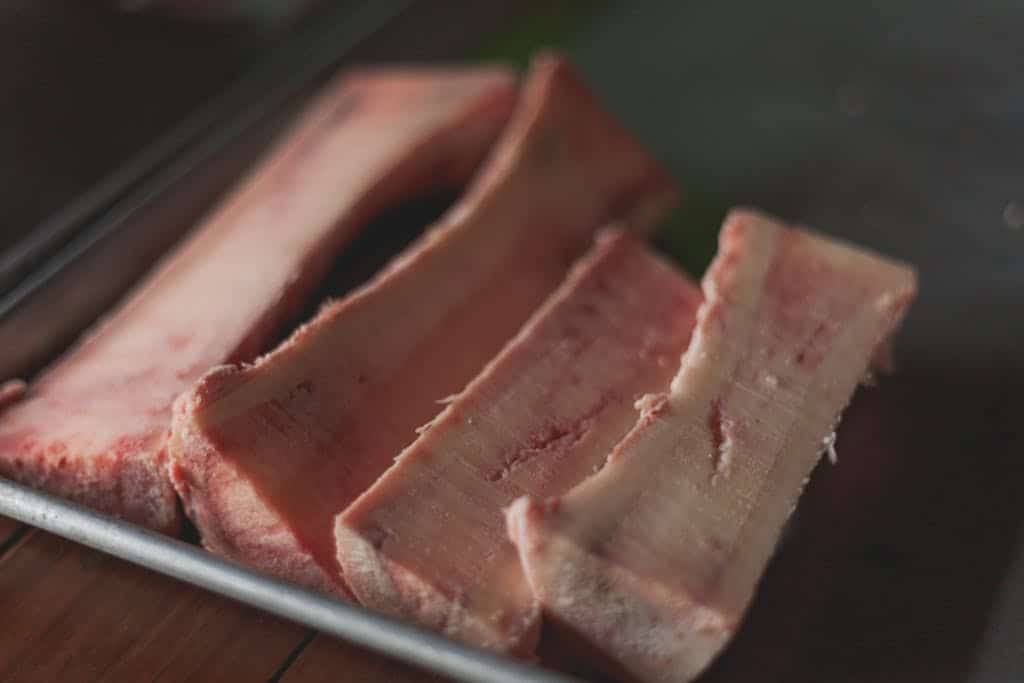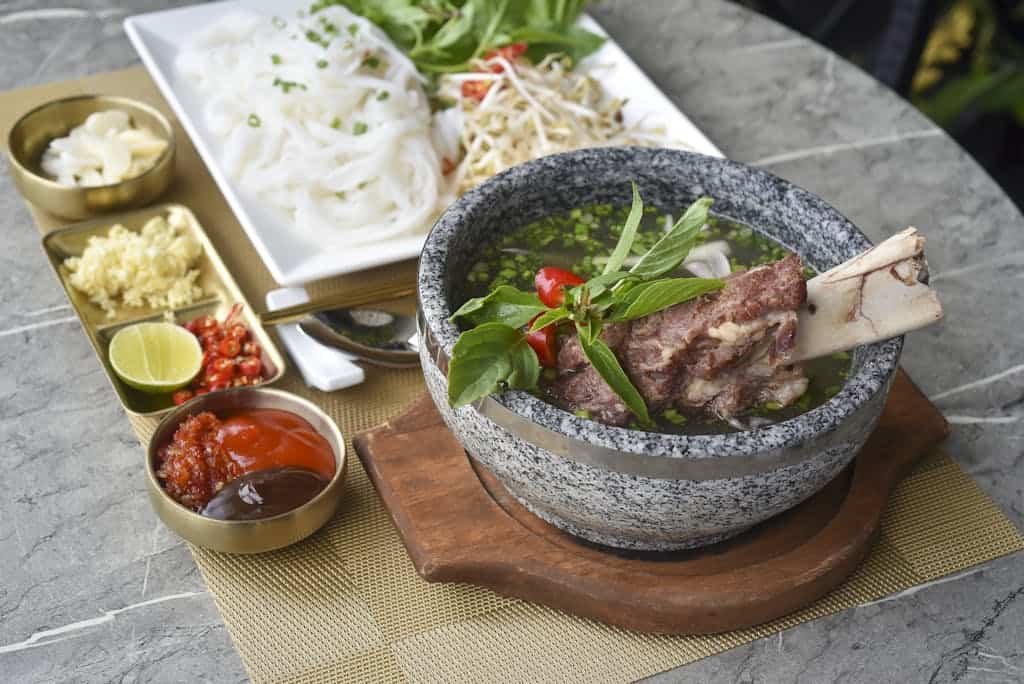Beef Bones: Nutritional Powerhouse and Culinary Staple
Beef bones, the skeletal structure of cattle, have been a staple in cooking and traditional culinary practices for centuries. Recently, they’ve gained popularity in the form of bone broths, which have become a trendy and nutritious addition to many health-conscious diets. But beef bones offer more than just a flavorful broth. They’re a rich source of essential nutrients, including protein, collagen, and minerals, making them an ideal ingredient for creating healthy and delicious dishes.
Beef Bones: A Versatile and Nutrient-Packed Ingredient
Beef bones are a versatile and nutrient-packed ingredient, ideal for creating flavorful dishes and boosting health naturally. From hearty stews and soups to nutritious broths and supplements, They offer a wealth of culinary and health benefits. In this series, we’ll delve into the world of bones, exploring their nutritional profile, culinary uses, and health benefits.
Key Takeaways
- Rich in collagen, minerals, and gelatin, offering numerous health benefits.
- Used in bone broths, soups, and stocks for flavor and nutrition.
- A sustainable way to reduce food waste by utilizing the whole animal.

What Are Beef Bones?
Beef bones are a type of skeletal structure obtained from cattle, and they play a significant role in cooking and traditional culinary practices. In this section, we’ll delve into the definition and types and their composition, and their culinary importance.
Definition and Types
They come in various forms, each with its unique characteristics and uses. The most common types include:
- Marrow bones: These bones contain a rich, fatty marrow that’s perfect for making bone broth or stock.
- Knuckle bones: These bones are typically used for making soups and stews, as they add depth and flavor to the dish.
- Neck bones: These bones are often used in slow-cooked dishes, such as braises or stews, where they can add rich flavor and texture.
- Shank bones: These bones are typically used for making soups, stews, or braises, and are known for their tender, fall-off-the-bone meat.
Each type of beef bone offers different culinary and nutritional benefits, making them a versatile ingredient for any kitchen.
Beef Bone Composition
Beef bones are composed of a variety of nutrients, including:
- Bone matrix: This contains collagen, calcium, magnesium, and phosphorus, which are essential for bone health and development.
- Marrow: This fatty tissue is rich in fatty acids, vitamins, and minerals, making it a nutritious addition to any dish.
Culinary Importance
They are used globally in a variety of dishes, including soups, stews, and broths. They’re known for their ability to infuse rich, deep flavor into dishes, making them a staple in many cuisines. Whether you’re making a hearty stew or a nourishing broth, they are an essential ingredient that can elevate your cooking to the next level.
Nutritional Benefits of Beef Bones
Beef bones are a nutritional powerhouse, offering a range of benefits that can improve overall health and wellbeing. From promoting healthy skin and hair to supporting joint and bone health.

High in Collagen and Gelatin
Beef bones are an excellent source of collagen and gelatin, which are essential for maintaining healthy skin, joints, and gut lining. The collagen and gelatin can help to:
- Support skin elasticity: Improving skin tone and reducing the appearance of fine lines and wrinkles.
- Promote joint health: Reducing joint pain and stiffness, making it easier to move and exercise.
- Support gut health: Healing and sealing the gut lining, reducing inflammation and improving digestion.
- Promote healthy hair and nails: Strengthening hair and nails, making them less prone to breakage.
Rich in Minerals
They are rich source of essential minerals, including:
- Calcium: Essential for building and maintaining strong bones and teeth.
- Phosphorus: Plays a crucial role in energy production and bone health.
- Magnesium: Essential for muscle and nerve function, as well as maintaining a healthy heart rhythm.
Packed with Healthy Fats
The marrow contains healthy fats, including stearic acid, which can:
- Provide energy: Supporting physical activity and mental performance.
- Support brain health: Improving cognitive function and reducing the risk of neurodegenerative diseases.
Beef Bones Boost Gut Health
The gelatin in beef bones can help to:
- Promote a healthy gut lining: Healing and sealing the gut lining, reducing inflammation and improving digestion.
- Reduce gut inflammation: Amino acids like glutamine can help to reduce inflammation and improve gut health.

Supports Joint and Bone Health
The collagen and other nutrients in beef bones can help to:
- Reduce joint pain and stiffness: Improving mobility and reducing the risk of joint degeneration.
- Contribute to bone density and strength: Supporting healthy bone growth and development.
In conclusion, they are a nutritional powerhouse that can provide a range of health benefits. From promoting healthy skin and hair to supporting joint and bone health, the benefits are numerous and significant.
How to Use Beef Bones in Cooking
Beef bones are a versatile ingredient that can be used in a variety of dishes, from hearty broths and soups to rich and flavorful sauces. Here are some ways to use beef bones in cooking:
Bone Broth Preparation
Ingredients:
- Beef bones
- Water
- Vinegar
- Aromatics (garlic, onion, herbs)
Method:
- Combine ingredients in a large pot or slow cooker.
- Simmer for 12-24 hours to extract nutrients and flavor.
- Strain and discard solids.
Benefits of adding vinegar:
- Helps extract calcium and minerals from the bones.
- Enhances flavor and richness of the broth.
Other Culinary Applications
- Stocks and Soups: Use beef bones as a base for dishes like French onion soup or pho.
- Roasting Bones: Roast bones before adding to broths or soups to enhance flavor.
Using Marrow
- Scoop out roasted marrow: Use as a spread or add to recipes for richness.
- Marrow butter: Mix roasted marrow with butter for a luxurious topping for bread or steak.
Waste-Free Ideas
- Use leftover bone broth: Add to rice, grains, or sauces for added flavor and nutrition.
- Compost bones: After use, compost bones to minimize waste and create nutrient-rich soil for your garden.
By incorporating beef bones into your cooking, you can create delicious and nutritious dishes while reducing food waste. Get creative and experiment with different recipes!
Popular Dishes Featuring Beef Bones
Beef bones are a staple ingredient in many cuisines around the world, and are used to create a variety of delicious and nutritious dishes. Here are some popular recipes that feature beef bones:
Global Recipes
- Pho (Vietnam): Aromatic beef broth with spices and herbs, served with rice noodles and your choice of beef cuts and even Honeycomb Tripe
- Osso Buco (Italy): Braised beef shank with marrow-rich bones, served with risotto and gremolata.
- Beef Bone Soup (Korea): Milky, nutrient-dense broth (Seolleongtang) made with beef bones, served with noodles and vegetables.
Innovative Recipes
- Bone Marrow Butter: Spread on bread or use in cooking to add a rich, savory flavor.
- Beef Bone Stew: A hearty dish made with bones, vegetables, and beef stock, perfect for a cold winter’s night.
- Bone-In Roasts: Adds depth of flavor to large cuts of beef, such as prime rib or ribeye.
These are just a few examples of the many delicious dishes that can be made this special food.. Whether you’re looking for a traditional recipe or something new and innovative, beef bones are a versatile ingredient that can add flavor and nutrition to any meal.
Get Creative with your Recipes!
With their rich, meaty flavor and nutritional benefits, beef bones are a great addition to many recipes. So why not get creative and experiment with different dishes and cooking methods? From soups and stews to roasts and sauces, the possibilities are endless!
Health Benefits vs. Potential Drawbacks of Beef Bones
Beef bones offer a range of health benefits, but like any food, they also have some potential drawbacks. Here’s a balanced look at the advantages and disadvantages of incorporating beef bones into your diet.
Benefits
- Nutrient-dense: Beef bones are rich in protein, collagen, and minerals like calcium, magnesium, and phosphorus, making them a nutritious addition to your diet.
- Sustainable: Using the whole animal, including the bones, reduces food waste and supports sustainable agriculture by utilizing animal byproducts that would otherwise be discarded.
Beef Bone Potential Drawbacks
- High in purines: They can be high in purines, which can be a concern for individuals with gout or kidney stones. It’s essential to consult with a healthcare professional if you have these conditions.
- Long cooking times: May require extended cooking times to extract their nutrients effectively, which can be time-consuming and may not be suitable for everyone.
Safe Usage Tips
- Source from grass-fed, organic cattle: Choose bones from grass-fed, organic cattle to maximize nutritional value and limit exposure to heavy metals and pesticides.
- Cook bones properly: Follow proper cooking techniques to ensure the bones are cooked long enough to break down the collagen and release their nutrients.
By understanding the benefits and potential drawbacks of beef bones, you can make informed decisions about incorporating them into your diet. With proper sourcing and cooking, beef bones can be a nutritious and sustainable addition to your meals.
Making Meat Stock with Beef Bones for Histamine Sensitivity
If you struggle with histamine sensitivity, making meat stock with beef bones can be a challenging task. Histamine is a naturally occurring amino acid found in many foods, including meat and bone broth. However, there are ways to minimize histamine levels in your meat stock and make it more tolerable for those with histamine sensitivity.
Choosing the Right Bones For Histamine Intolerance
- Select fresh, grass-fed beef bones: Opt for fresh, grass-fed bones from a reputable source to reduce the risk of histamine contamination.
- Avoid aged or fermented bones: Aged or fermented bones can be high in histamine, so it’s best to avoid them if you’re sensitive to histamine.
Cooking and Preparation
- Use a gentle cooking method: Instead of using high-pressure cooking methods, opt for a gentle simmering process to minimize histamine release.
- Cook bones for a shorter time: Cooking bones for shorter periods (6-8 hours) can help reduce histamine levels.
- Use a cold start: Starting with cold water and gradually bringing the temperature up can help reduce histamine release.
- Skim and discard impurities: Regularly skim and discard impurities that rise to the surface during cooking to minimize histamine-containing particles.
Additional Tips
- Add histamine-reducing ingredients: Certain ingredients like Red Onion, Shallots, Parsley and cloves have natural histamine-reducing properties. Add them to your stock to help minimize histamine levels.
- Use a histamine-reducing cooking liquid: Use a cooking liquid like apple cider vinegar or white wine, which have natural histamine-reducing properties.
- Store stock properly: Store your meat stock in the fridge or freezer to slow down histamine production.
By following these tips, you can create a meat stock with beef bones that is more tolerable for those with histamine sensitivity. However, it’s essential to consult with a healthcare professional or registered dietitian for personalized advice on managing histamine sensitivity.

Where to Buy and Store Beef Bones
When it comes to buying and storing beef bones, there are several options to consider. Here are some tips to help you get started:
Where to Buy
• Local butcher shops: Visit local butcher shops or meat markets in your area for fresh beef bones.
• Farmers’ markets: Many farmers’ markets carry them from local, grass-fed farms.
• Specialty grocery stores: Some specialty grocery stores like Whole Foods or Trader Joe’s may carry them in their meat department.
• Online suppliers: Look for online suppliers that offer organic, grass-fed options. Some popular options include ButcherBox, Crowd Cow, and Amazon.
Storage Tips
- Fresh Bones: Store fresh bones in the refrigerator and use within 2-3 days.
- Frozen Bones: Freeze them in airtight containers or vacuum-sealed bags for up to 6 months.
Cost Considerations
- Affordable: Beef bones are an affordable and cost-effective protein source compared to other options.
- Bulk purchasing: Purchasing beef bones in bulk can save you money in the long run. Consider buying a large quantity and freezing them for future use.
By following these tips, you can find high-quality beef bones and store them properly to ensure they remain fresh and nutritious.

Frequently Asked Questions About Beef Bones
Here are some frequently asked questions:
Best Bones for Broth
- Marrow bones, knuckle bones, and oxtail: These bones are ideal for making broth due to their high collagen and marrow content.
Can You Reuse Beef Bones?
- Yes, but with reduced flavor and nutrients: You can reuse beef bones for multiple broths, but each subsequent batch will have reduced flavor and nutrients.
Cen Beef Bones Be Given To Dogs?
- Cooked bones should not be given to dogs: Cooked bones can splinter and cause harm to dogs, so it’s best to avoid giving them to your furry friends.
Stock vs. Broth
- Stock is made primarily from bones: Stock is a clear liquid made by simmering bones, while broth includes meat and vegetables for added flavor and nutrition.
By understanding these FAQs, you can make the most of your beef bones and create delicious, nutritious broths and stocks.
Conclusion
Beef bones are a nutritious and versatile ingredient that can be used to make a variety of delicious and healthy dishes. From bone broth to stocks, soups, and stews, they are a great way to add flavor and nutrition to your meals.
In this guide, we’ve covered the benefits of using them, including their high collagen content, rich mineral profile, and ability to promote gut health and reduce inflammation. We’ve also discussed how to choose the right ones, how to cook them, and how to store them.
Additionally, we’ve provided tips and recipes for using them in your cooking, including how to make bone broth, bone soup, and marrow butter. We’ve also addressed common questions and concerns about using them, such as their safety and sustainability.
By incorporating beef bones into your diet, you can experience the many benefits they have to offer. So why not give it a try? Start cooking with them today and discover the delicious and nutritious possibilities they have to offer!